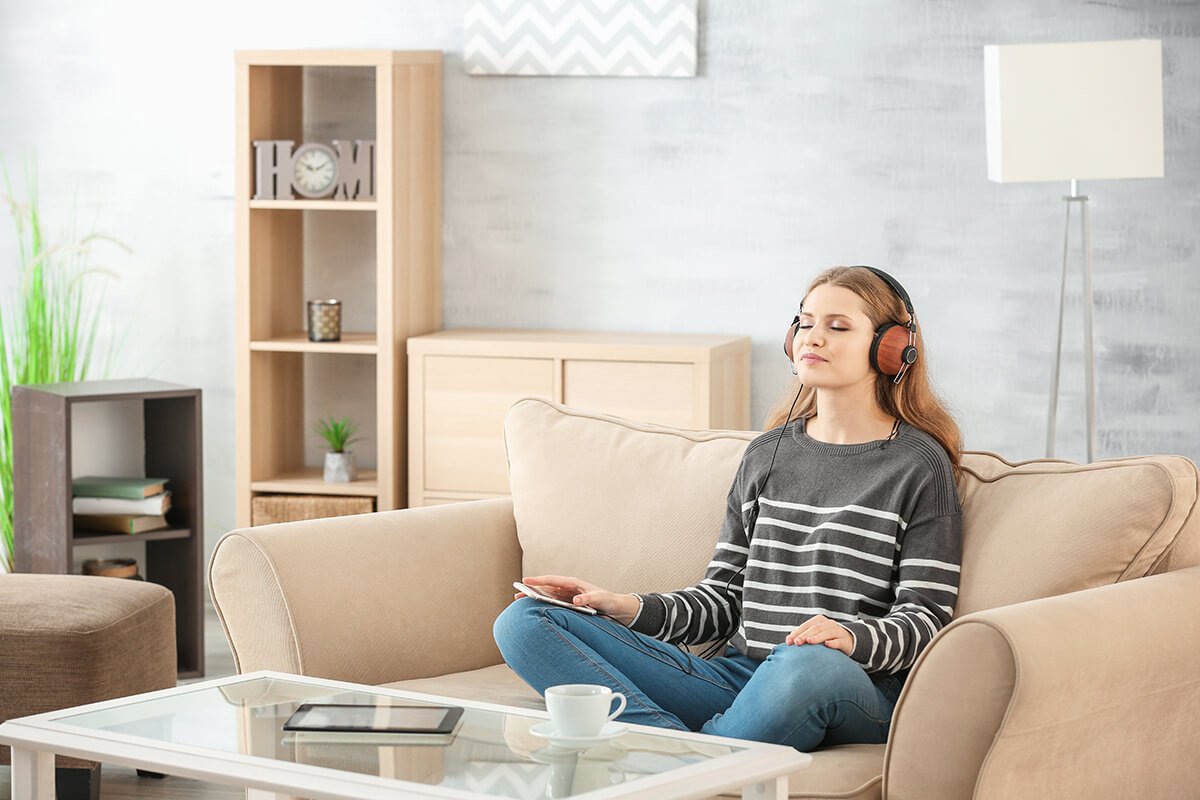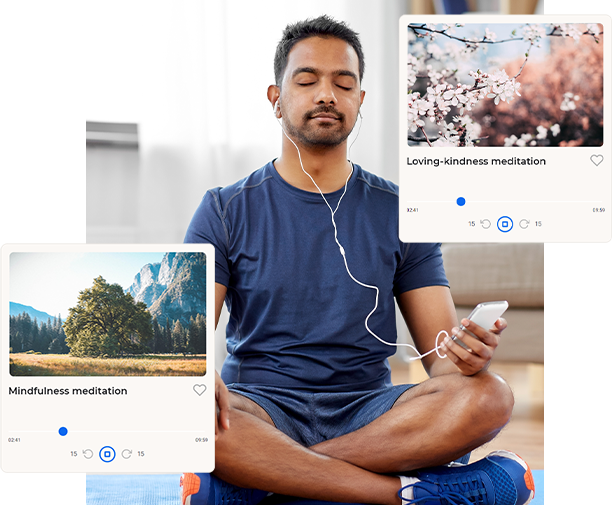Undergoing therapy and taking the right medications are proven ways to manage ADHD symptoms. But how about mindfulness meditation? Can it help calm the mind and improve the focus of persons with ADHD?
Studies are stating that meditation helps in the active observation of moment-to-moment feelings and thoughts. While other treatments need a medication prescription or involve paying the therapist, meditation is a more natural alternative you can do at home.
What is ADHD?
ADHD or Attention-Deficit/Hyperactivity Disorder is a neurodevelopmental disorder that may last until adulthood. Children with ADHD have difficulty paying attention, control impulsive behaviors, and become hyperactive.
For adults who have ADHD, symptoms include mood swings, inability to concentrate, impaired social skills, restlessness, etc. With the signs and symptoms of ADHD for both children and adults, meditation is beneficial short-term and long-term. A short walk, Yoga, or even just sitting and doing nothing are helpful mediations to calm the mind.
Meditation does not cure ADHD, so as medication and cognitive therapy. But meditation will help control the symptoms. Experts suggest making this a daily habit for the rest of your life to manage your daily activities. The great thing is that you can learn to meditate on your own at home. No meditation teacher required.
How meditation helps ADHD: What happens in the mind and body?

Medications can help control the symptoms of ADHD, but the side effects are unpleasant. That is why parents and loved ones of persons with ADHD are looking for alternative treatment methods to manage the symptoms, and the most popular way is meditation. Here are the reasons how medication helps ADHD:
Release of Happy Hormones: During meditation, the body releases the happy hormones serotonin and endorphins. These happy hormones will fight the effects of excess adrenalin in the body. This extra adrenalin in the body causes ADHD symptoms, and these happy hormones help the mind become calm and focused.
Practice Discipline: During meditation, the person sits quietly, deep breathing, focuses on one’s thoughts, improves focus, and, most importantly, practice discipline. Kids and adults with ADHD have a short attention span, ergo “attention deficit,” and easily get distracted. The long-term practice of meditation controls their inability to focus and practice discipline overtime.
Meditation is an alternative treatment that is built over time and has beneficial effects last long-term. You can train the mind to sit still and calm down; discipline will come naturally.
Balances the Brain Chemistry: As mentioned earlier, the meditation releases happy hormones that help manage ADHD symptoms. Studies prove that meditation positively affects brain chemistry by balancing neurotransmitters. Any imbalance in the neurotransmitter levels in the brain may alleviate the symptoms of ADHD. With ADHD, the brain’s dopamine levels are in short supply, and meditation can increase their production. Medical studies concluded that meditation has more benefits and no risks and side effects than relying alone on prescription drugs.
How it works
If a muscle in the body is weak, you can make it healthier by putting it to work or exercising. If you want to build your upper body strength, you do bench presses in the gym. If you’re going to have a stable core, then you do planks. If you wish to exercise your brain, you meditate. Meditation helps with ADHD the same way how meditation helps with focus.
The prefrontal cortex part of the brain is responsible for impulse control, focus, and planning. Individuals with ADHD have a thinner prefrontal cortex, so they manifest difficulty in focusing, planning, and impulse control. Studies show that meditation helps in thickening the prefrontal cortex of the brain.
The research conducted by UCLA on how meditation helps ADHD concluded that meditation relieves the symptoms of ADHD. People with ADHD who underwent mindful meditation classes for 2-3 hours once a week, and 5 to 15 minutes daily meditation at home for eight weeks, can stay focused on any given task. Researchers also observed they were less anxious and depressed.
Mindfulness meditation will give you the control over your brain even you have ADHD. You can teach yourself to focus on a task, avoid getting distracted, be aware of your emotions, and avoid acting impulsively. One of the most popular meditation practices for kids and adults is Yoga. It is suggested to practice Yoga for at least 20 minutes, twice a week for eight weeks to see significant results. Not only will Yoga control the symptoms of ADHD, but it will help you lose weight too.
Benefits of meditation for ADHD

Meditation improves the quality of life of kids and adults with ADHD. Other than its benefit in controlling the symptoms, other benefits positively affect both mind and body.
Benefits of Meditation in Children: If you are a parent or teacher of kids with ADHD, here are the signs you should look for to confirm meditation effectiveness. The child starts to pay attention, listens when spoken to, pay attention to details, plays quietly, talks lesser, lesser temper tantrums, or interacts better in school. These improvements may not appear altogether, but baby steps on their progress is a good sign.
Benefits of Meditation in Adults: For adults, there are improvements like time management, lesser mood swings, better social skills, ability to focus, lesser daydreaming, etc. Adults with ADHD who practice meditation overtime are more functional at work, at home, and in the community.
Other Benefits: Meditation can also lower blood pressure, decrease pain, improve sleep, reduce anxiety, boost self-esteem, lessens stress, and helps in losing weight (especially Yoga).
Persons with ADHD have difficulty in getting stuff done and become forgetful. When they feel they fail at something, they get frustrated and get critical of themselves. Meditation will help them to take control of their emotions and burst into anger. Over time, meditation lowers the stress hormones so the person won’t get out of control and feel helpless when placed in vulnerable situations.
Maybe you’re wondering how meditation can help lose weight, but it’s all about the discipline. Meditation trains the mind and practices self-discipline when it comes to exercising and eating healthily to lose weight.
Tips for meditating with ADHD
First, plan the schedule, time of the day, how many times a week, how long, and what method. Choose a program, and commit to it every day, set the alarm if needed. There are different methods to meditate, and if one way doesn’t work, you may try another one until you figure out what works best for you. How meditation helps with your ADHD will depend on the practice you choose.
Sitting meditation: If a person with ADHD can sit still for 20 minutes a day, it is best to meditate in a quiet spot in the house. A person with ADHD usually has a lot of things running through their mind. In sitting meditation, the awareness, thoughts redirect your focus to yourself.
You can sit still, close your eyes, breathe deeply, and turn on relaxing background music if needed. Some people listen to guided imagery audio recordings while meditating. Picture out on your mind the sky to represent your awareness. The clouds are your thoughts, and space between the clouds are redirected to yourself. Others use this time for prayer, reflection, and to organize their thoughts. Within the day, or during lunch breaks, a 5-minute meditation will go a long way.
Walking meditation: If sitting meditation does not work for you, and you have trouble staying still, you can try walking meditation. You can briskly walk, concentrating your thoughts on the sole of your feet, and avoid daydreaming. If you feel like your mind is wandering, bring back your concentration on the soles of your feet.
You can do this for 20 minutes a day as a start, and work your way up for one hour a day. This is not only good for meditation but is an excellent physical activity to keep your mind and body in great shape.
Yoga: Another form of meditation incorporated with exercise is Yoga. Yoga is combined with meditation and breathing to help calm the mind and body. With Yoga, you can focus on your body posture, breathing, and balance. You can start by enrolling yourself in a yoga class at least twice a week, or watch yoga videos you can follow. Over time, you can appreciate Yoga’s results, and you may notice that you lost weight too.
Final thoughts
The bottom line of meditation is to practice your mind’s ability to concentrate on one thing and have the patience to finish the whole meditation successfully. Even healthcare providers are amazed on how meditation helps ADHD. You can use music, guided imagery, audiobooks, or find a yoga buddy, whichever works best for you.
Start small and make it a habit to include meditation on your daily routine. Start with 20 minutes, twice a week. Then work your way up to 1 hour a day, every day, whichever is comfortable for you. Try different types of meditation until you find out which best works for you. If needed, keep a journal and track down the progress of your symptoms. Remember that there are no shortcuts in this; do not expect instant results. The journey to control yourself is essential to become the best version of you.
We also have an app that contains a ton of free guided practices to help you manage your ADHD and symptoms. Download Declutter The Mind for free on iOS and Android and start a regular meditation practice.




